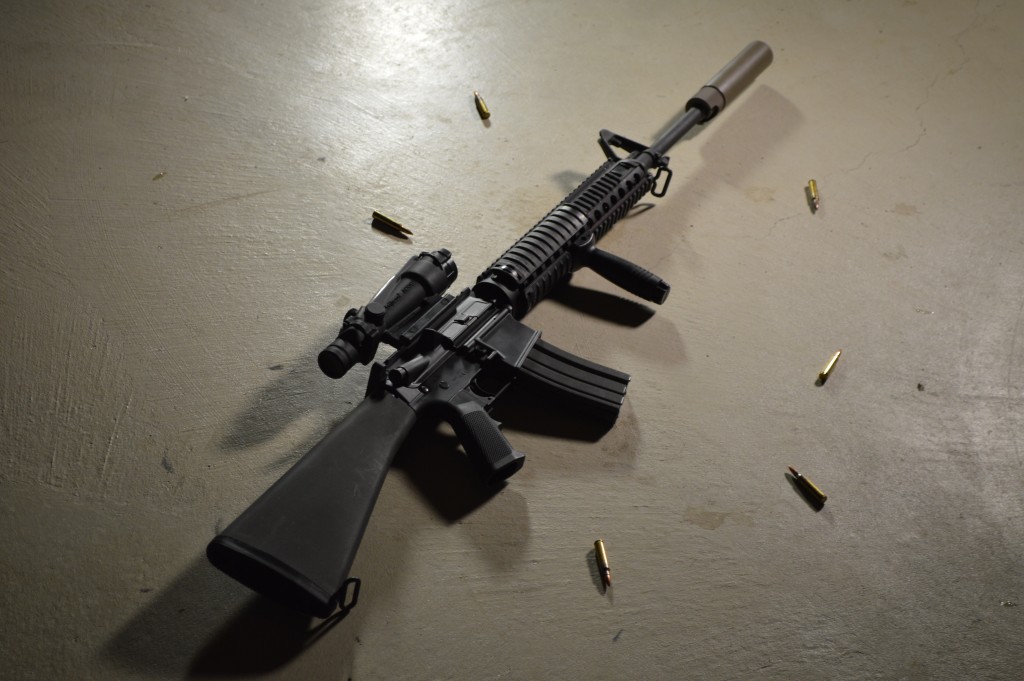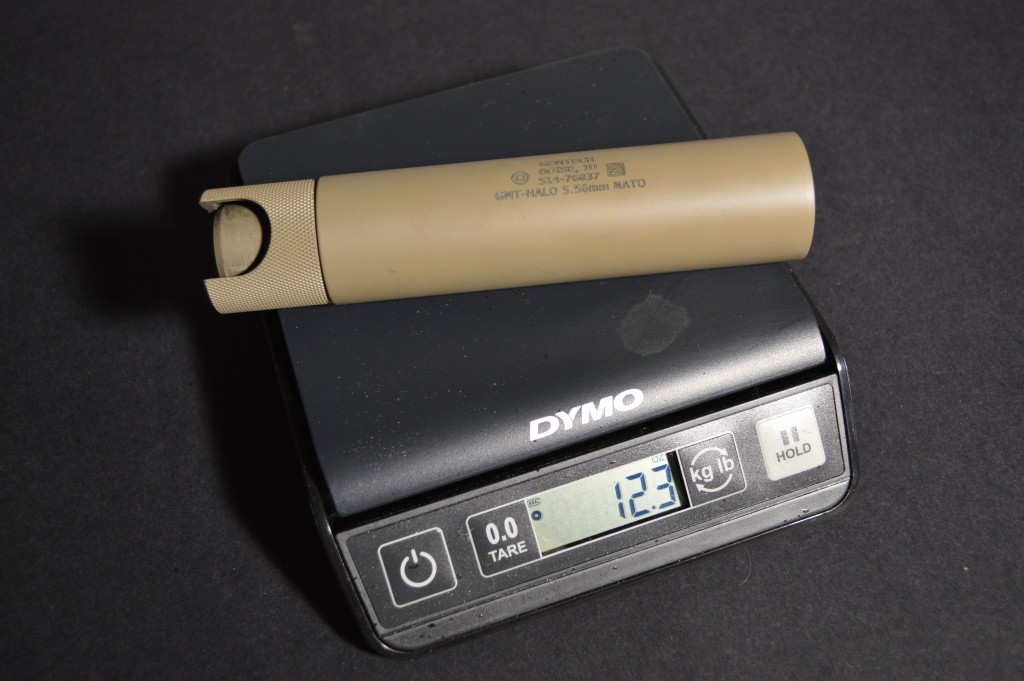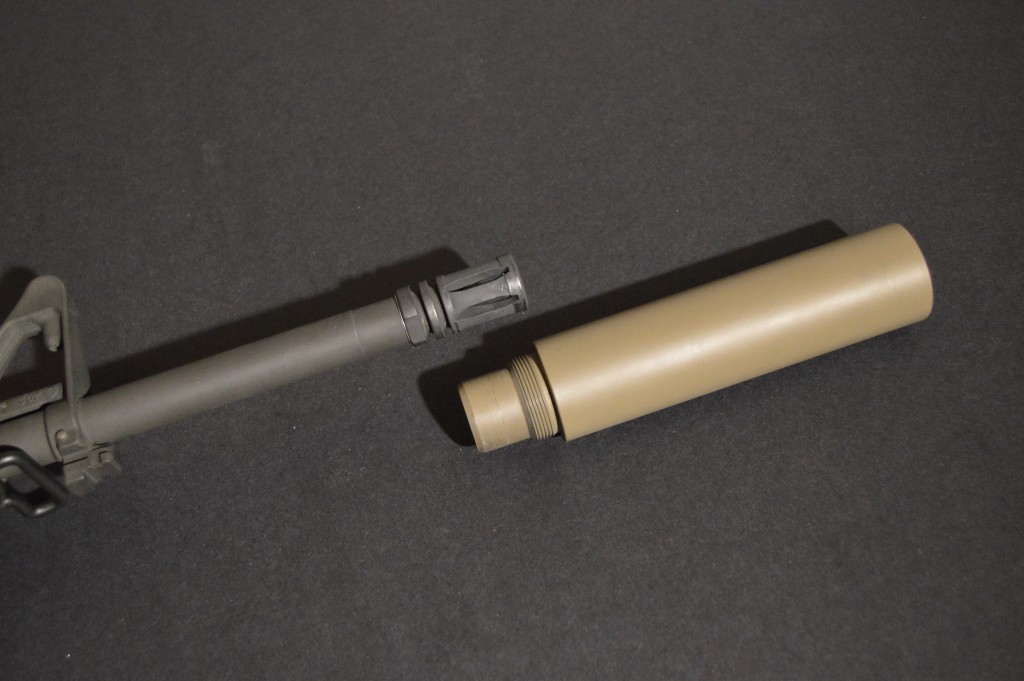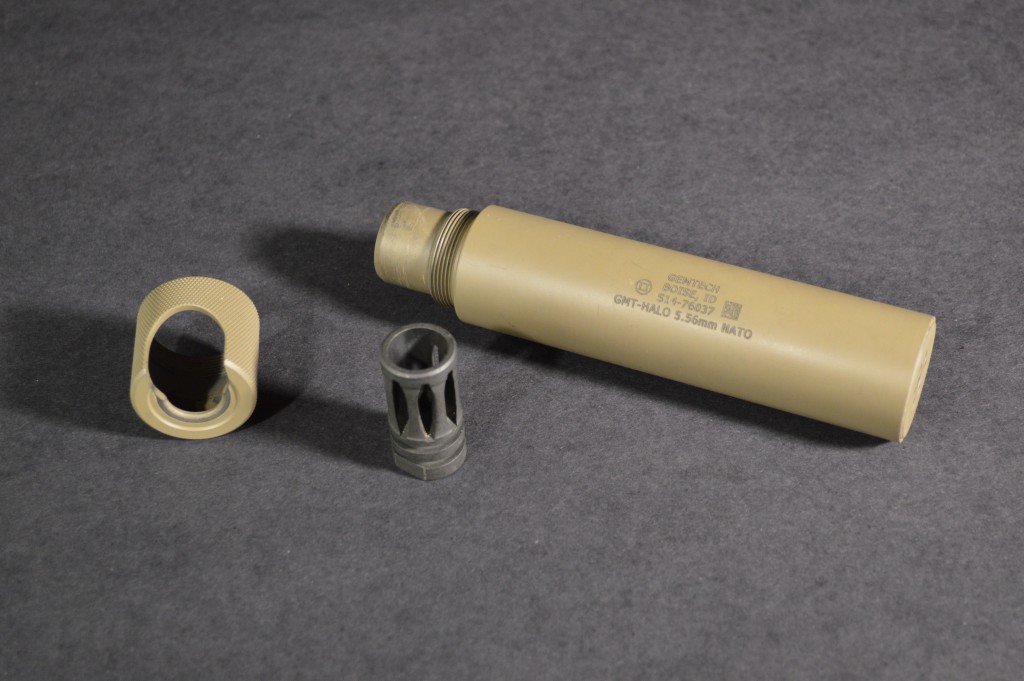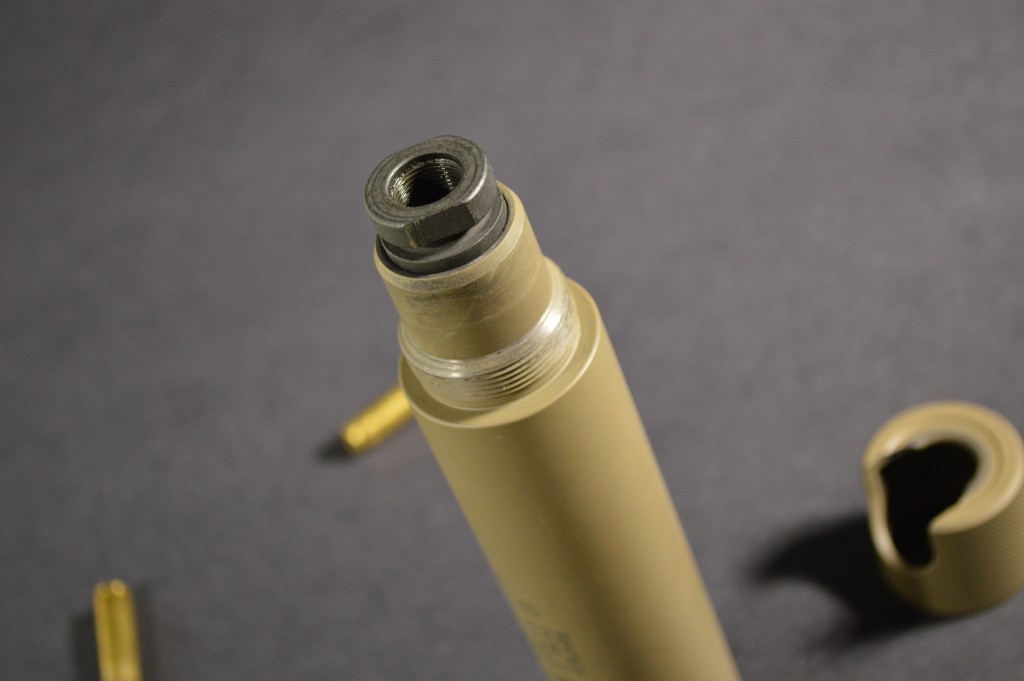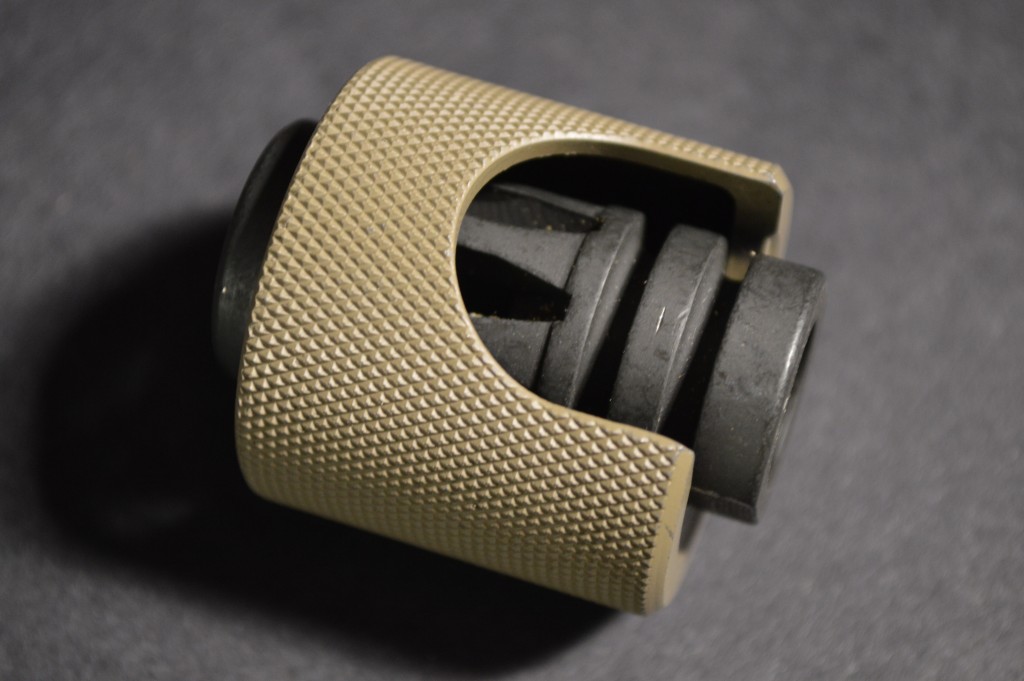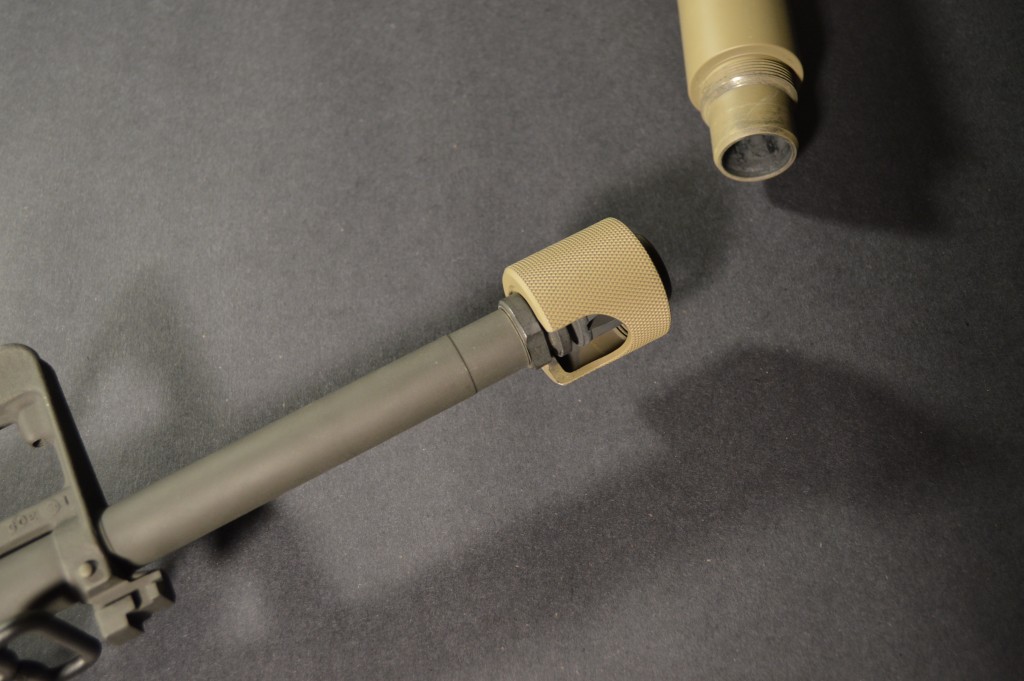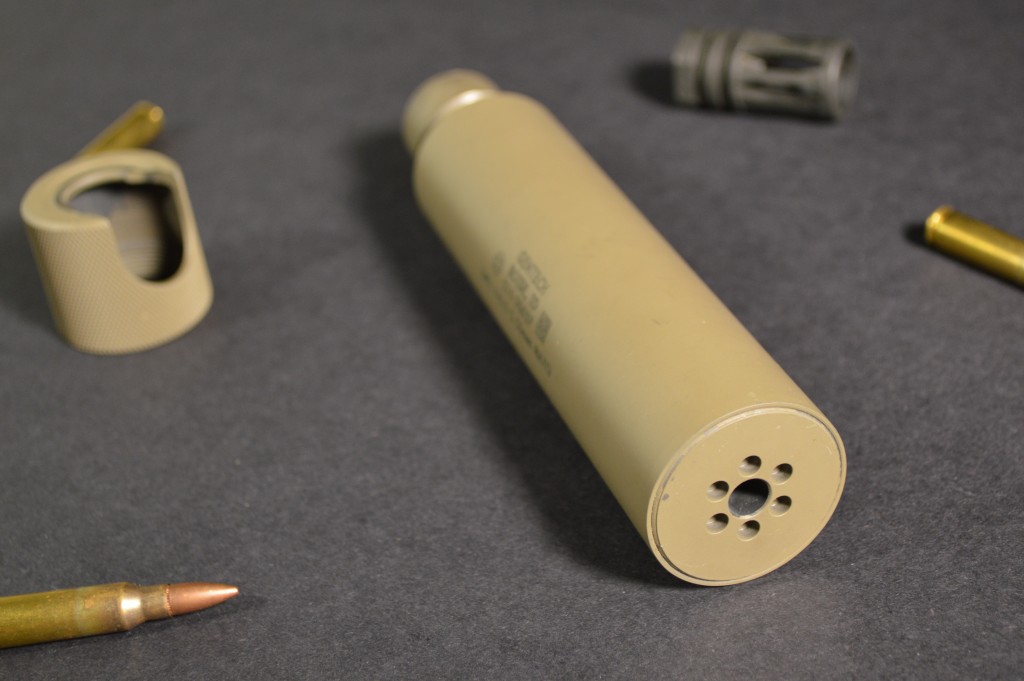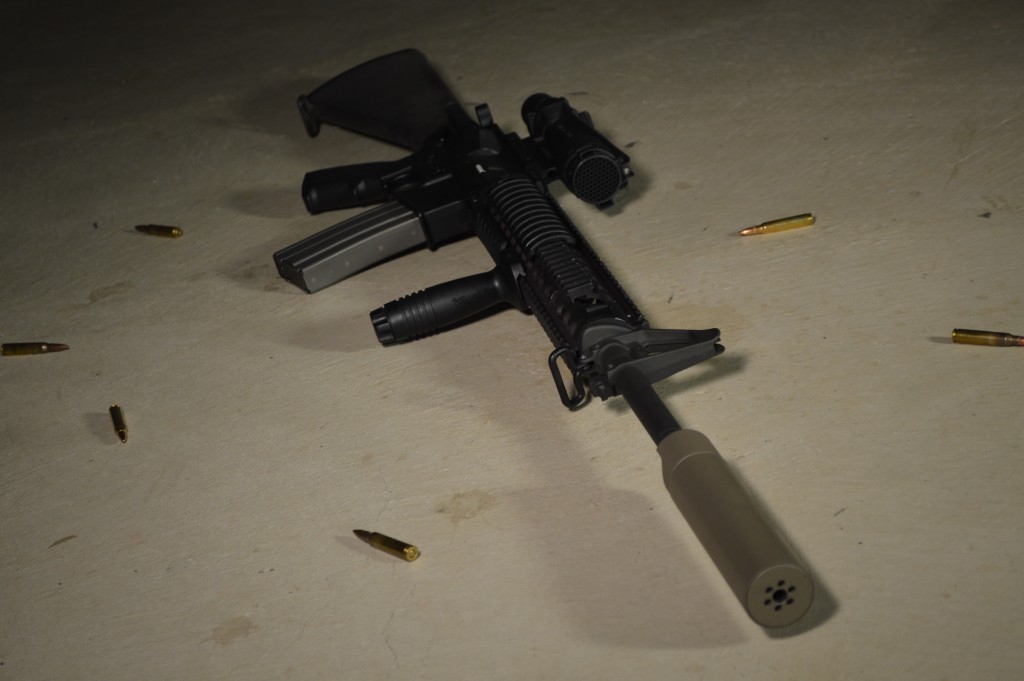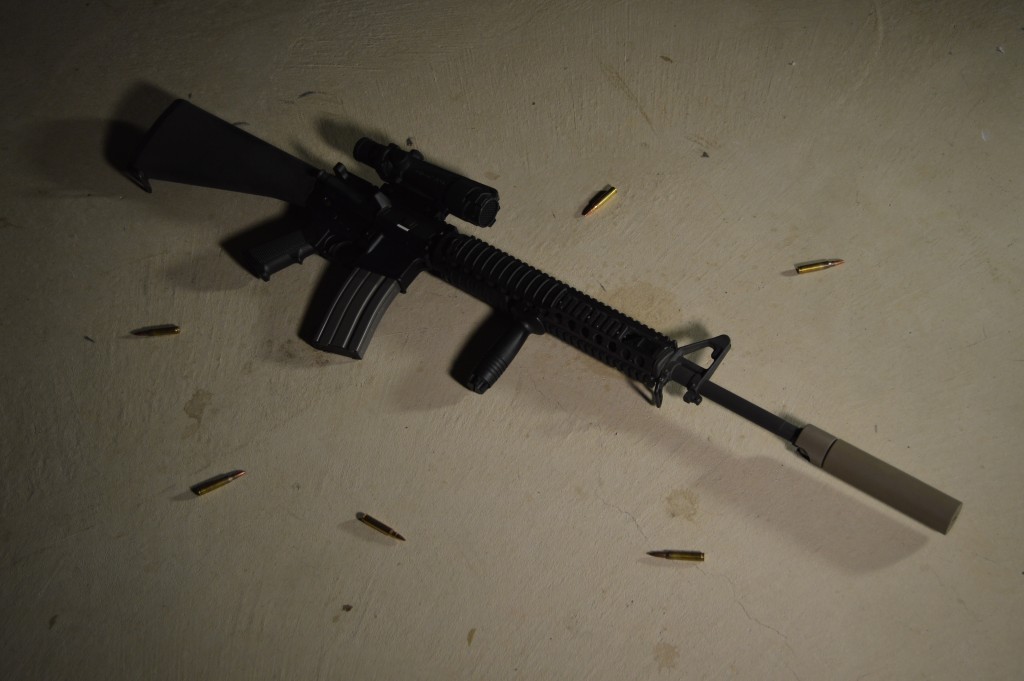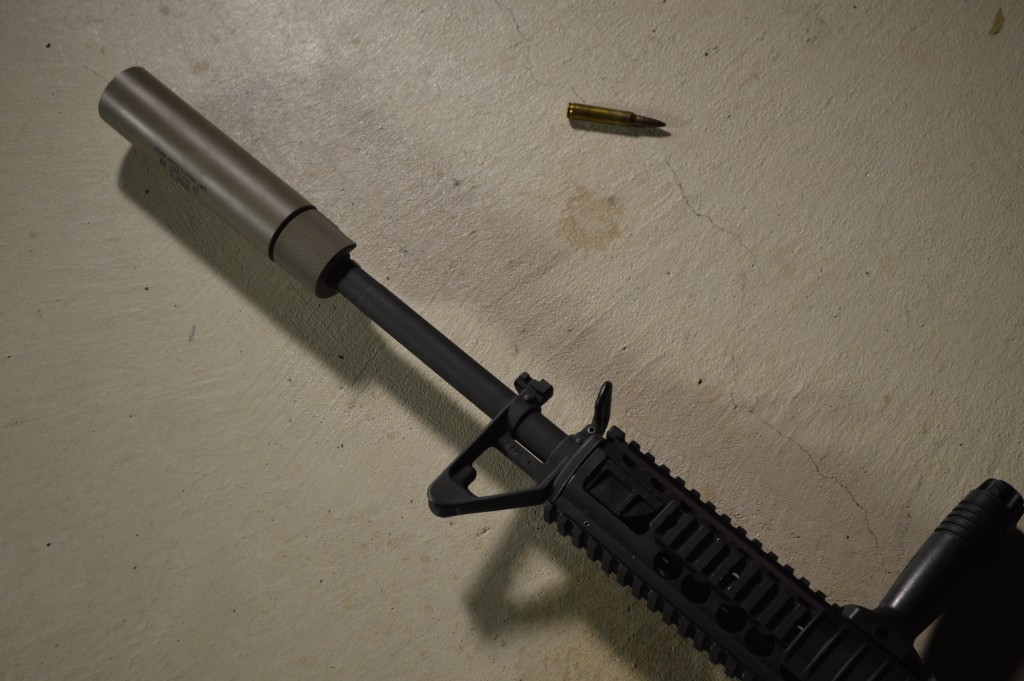Silencer Shop Authority: Gemtech GMT-HALO Review
One of my favorite parts of firearm collecting and shooting has always been building clones of military issue rifles and handguns. Much of this enjoyment comes from my fascination with military history; and generally, these builds are limited to specific optics and forearms, but they also feature muzzle devices that typically do not facilitate suppressor usage. Since I truly enjoy suppressed shooting, I have been torn in finding a way to appropriately suppress my M16A4 clone without sacrificing the NATO A2 birdcage flash hider.
Perhaps more important than my concerns about changing the A2 muzzle device is the fact that proprietary suppressor mounts add substantial cost to silencer ownership. When an A2 flash hider costs just $10, it truly is difficult to justify spending $60 or more on a proprietary muzzle device. Over the years, several companies have produced silencers that attach to the A2 birdcage, but many of these designs have been discontinued in favor of offerings with proprietary mounts. Curious to see how the current crop performs, I reached out to the guys at Silencer Shop to bring in one of Gemtech’s HALO cans and Griffin Armament’s M4SDII for review.
Today, we will look at the titanium GMT-HALO version of Gemtech’s A2 compatible suppressors. Released in 2014 alongside the stainless steel GM-HALO, this silencer is a generational improvement over Gemtech’s original HALO. Of the A1/A2 compatible suppressors currently available, the HALO series are among the longest tenured and most recognizable.
Size & Weight
One of the major draws for the GMT-HALO is its light weight. At just 12.3 ounces, the HALO is one of the lightest rifle suppressors currently available. Interestingly, when I first held the silencer I have to admit that it did not feel as light as I anticipated. These concerns quickly dissipated once I verified its weight on a scale and subsequently mounted it on a rifle. On a firearm as long as my M16A4 clone, this meant that I could more comfortably shoulder the rifle for longer periods of time. Furthermore, the light HALO seemed to have less effect on barrel harmonics than other 5.56mm suppressors I have tested, leading to more consistent POI when compared to unsuppressed results (more on this later).
Though the GMT-HALO is light, it is still a standard sized 5.56mm suppressor. With the closer installed, the can comes in at around 7” inches long. In terms of added length, the HALO’s muzzle sits 5.75” forward of a NATO flash hider. Like most 5.56mm suppressors, the tube is 1.5” in diameter. The GMT-HALO rests in the middle of the 5.56mm pack in every dimensional category.
Finish
When the GMT-HALO first appeared at SHOT 2014, the demonstration model sported a sandblasted, bare titanium finish. Since then, Gemtech has opted for high temperature Cerakote in Desert Tan on the HALO and several others in their lineup. Cerakote is a popular choice for suppressor manufacturers because it is cheaper to apply than many metal treatments and seems to hold up well to heat and high rates of fire. Even so, Cerakote will scratch with heavy use and can still discolor at very high temperatures. Fortunately, restoring the HALO’s looks is as simple as spraying a new layer of paint on the can.
Mount
The HALO series mounts to standard A2/A1 and similar flash hiders/muzzle brakes using a sort-of-QD mounting method. At the rear of the GMT-HALO is a knurled ring that Gemtech calls a “closer”. This closer is slipped over the flash hider and the rear edge fits down into the blank firing adapter (BFA) groove at the back of the muzzle device. The suppressor body then slides over the flash hider and the closer is threaded onto the back of the can until snug. Though I did not realize it until after my range testing, Gemtech recommends shooters align the suppressor so that the notch in the closer faces directly downward when tightened. This apparently reduces blowback, but sadly I have not tested the claims.
As I said before, the HALO mounting system is not truly a quick attach style. My arbitrary requirement for a suppressor to be fully QA/QD is that it must facilitate one handed attachment and removal. In order to properly snug the HALO to the flash hider, two hands really are necessary. Once tightened down, the GMT-HALO also requires two hands for removal. Do not get me wrong, it is a good system, but it is not the fastest A2 compatible mount on the market.
Beyond A2 and A1 birdcage flash hiders, the GMT-HALO is compatible with a variety of other NATO style muzzle devices. Gemtech officially endorses their aftermarket mounts as well as the PWS KAC556 for use with the HALO. If readers have questions about compatibility with particular mounts, please post them in the comments and I will do my best to find an answer, but it may be easier to reach out to Gemtech via Facebook or their website. Since there are so many muzzle devices available for the AR-15, it is almost impossible to come up with an exhaustive list of compatible parts.
One last thing I will caution readers about when using the HALO is that the inside surface of the can that encircles the flash hider should be cleaned regularly. I found that even after a relatively short day at the range, removing the suppressor was quite a challenge as powder residue and carbon had caked on to the mount’s walls. This area of the GMT-HALO should really be cleaned after each range trip to prevent sticking.
Design & Materials
As its name implies, the GMT-HALO is made primarily of titanium. The tube and most of the baffles are titanium and the only exception to this trend is the inclusion of a beefy Inconel insert on the face of the blast baffle. The extensive use of titanium in the GMT-HALO keeps the suppressor light and Gemtech still rates it for moderate full auto use.
When I peered down the bore of the GMT-HALO, I was immediately surprised by the simplicity of its baffle stack. Unlike many modern 5.56mm suppressors that feature five or more baffles, the HALO sports only three. As I will discuss in the Range Report, the GMT-HALO performs admirably, but I am left wondering how it would fare with another baffle or two. Clearly weight was a primary concern with this suppressor. Each of the three baffles are clipped conical M-baffles, but the partially Inconel blast baffle is far thicker than the others. Gemtech rates the suppressor for use on barrels down to 10.3” and after seeing the blast baffle, I would have no qualms about using it on a short barreled rifle.
Something to note about the GMT-HALO is that it can technically be taken apart for cleaning. The endcap features divots that can be used with a spanner wrench for disassembly. I say “technically” however because Gemtech does not endorse user takedown of the can. The company has used thread locker to discourage disassembly. Since users run the risk of voiding the suppressor’s warranty by taking it apart, I cannot recommend such a course of action.
Range Report
The most appreciated facet of the GMT-HALO while at the range is its weight, or lack thereof. The 12.3 ounce (14.3 ounces counting the flash hider) can is a substantial departure from my Specwar 556 and its 23 ounce total system weight. Even on my M16A4 clone, the HALO did not ruin the rifle’s somewhat dubious balance.
In terms of suppression, the GMT-HALO was quite a surprise. It may not be quite as efficient as my Specwar, but for a light can that has merely three baffles, it sounds very good. People will often find that quality centerfire rifle suppressors sound similar, especially if they are close in size. This fact remains mostly true for the GMT-HALO, but it does have a slightly higher pitch than other high performance suppressors that are similar in size (but not weight).
Though I do not have perfectly comparable meter readings for the GMT-HALO, Silencer Shop tested its steel brother, the GM-HALO, last year. Mounted on a 10.5” barreled AR-15, the GM-HALO averaged around 138 dB, or 28 dB of reduction. Based on feedback from Silencer Shop, this translates to approximately 135 dB on a 16” barrel. This is exactly the sort of performance that Gemtech advertises (29 dB reduction). With these numbers in mind, the GMT-HALO is bested by top performers in the category, but not by much. My guess is that a fuller baffle stack would close this gap, but the weight trade-off would not be worth the marginal improvement.
My biggest complaint about the GMT-HALO was that it was probably the gassiest suppressor of the day. In testing alongside the Specwar 556 and Griffin Armament’s M4SDII, the HALO exhibited just a bit more backpressure than the other two. The competition between the HALO and the M4SDII was close in this regard, so I would not necessarily let the Gemtech can’s gassiness discourage me from purchasing the suppressor. Moreover, I did not have the closer’s opening facing downward when tightened which according to Gemtech, helps to reduce some of the blowback. Regardless, shooters looking to suppress the AR-15 family of rifles should familiarize themselves with the multitude of blowback mitigation strategies as most 5.56mm cans add considerable backpressure.
Unlike the other two suppressors I’ve mentioned, the GMT-HALO had virtually no effect on my rifle’s point of impact (POI). Typically, even the best suppressors cause some sort of POI shift, usually in the ballpark of one or two minutes of arc (MOA). This was not the case for the GMT-HALO; I needed to make absolutely no adjustments to my zero. As a matter of fact, my best grouping of the day (three rounds hitting at POA and just under an inch at 50 yards) came immediately after attaching the GMT-HALO for the first time.
At this point, my theory is that the mounting system of the HALO helps to prevent substantial POI shifts. Rather than applying torque to the muzzle or barrel, the suppressor squeezes the flash hider, which likely reduces the GMT-HALO’s effects on barrel harmonics. Moreover, the relatively minimalist baffle stack and light weight also seem to aid in the prevention of POI shift.
Conclusion
Gemtech’s HALO family has been on my radar for many years, but I have always wanted to try the suppressors before jumping on the A2-mounting bandwagon. While the GMT-HALO’s mounting system is not all that quick, it is very intuitive. The fact that A2 NATO birdcage flash hiders are so ubiquitous means that HALO owners are unlikely to ever have trouble finding workable mounts for the can; a very real concern if you consider that suppressor companies sometimes discontinue mounting systems or go out of business during the lifetime of a silencer. The HALO also makes sense for shooters with multiple AR-15s or other birdcage-equipped rifles. At less than $10 per, the A1/A2 flash hiders are far more economical than $60+ proprietary mounts.
Though the GMT-HALO lacks the sexy performance numbers of its competition, it puts up a respectable enough fight that the difference is mostly negligible. I found the suppressor’s backpressure to be annoying, but common mitigation methods would negate this concern. Overall, the GMT-HALO’s real strength is its light weight and some of us are willing to make a few concessions in other categories to avoid hanging literal poundage off the end of our rifles.
Shooters looking for a lightweight, but rugged suppressor with decent suppression capabilities and affordable mounts would be wise to consider the GMT-HALO. As a titanium suppressor, it does not come cheaply (from $892 at Silencer Shop), but some may find that the savings in mounts helps to offset the initial squeeze.
An information security professional by day and gun blogger by night, Nathan started his firearms journey at 16 years old as a collector of C&R rifles. These days, you’re likely to find him shooting something a bit more modern – and usually equipped with a suppressor – but his passion for firearms with military heritage has never waned. Over the last five years, Nathan has written about a variety of firearms topics, including Second Amendment politics and gun and gear reviews. When he isn’t shooting or writing, Nathan nerds out over computers, 3D printing, and Star Wars.

